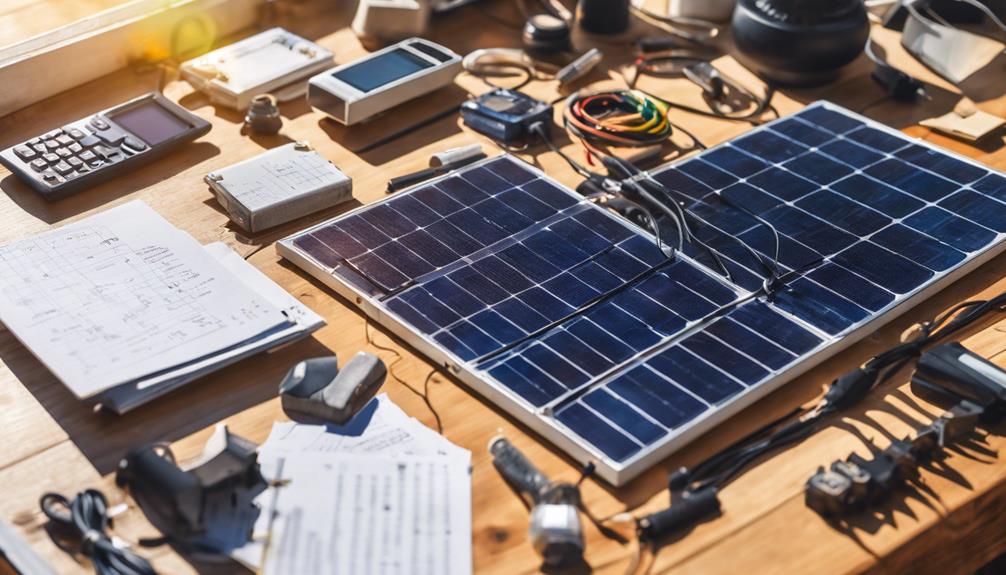
What is Photovoltaic Solar Energy?
Photovoltaic solar energy refers to the technology that converts sunlight directly into electricity using solar panels. These panels are composed of numerous solar cells made of semiconductor materials, typically silicon. When sunlight hits these cells, it excites electrons, creating an electric current. This process is known as the photovoltaic effect, and it is the backbone of solar energy systems. Photovoltaic solar energy is a key player in the renewable energy sector, providing a sustainable and eco-friendly alternative to fossil fuels.
The Benefits of Photovoltaic Solar Energy
One of the most significant advantages of photovoltaic solar energy is its environmental impact. By harnessing the sun’s power, we can significantly reduce greenhouse gas emissions and dependence on non-renewable energy sources. Additionally, incorporating solar energy into homes and businesses can lead to substantial savings on electricity bills over time. Many governments and organizations offer incentives, such as tax credits and rebates, to promote the use of photovoltaic systems, making them more financially accessible. Moreover, solar energy can enhance energy security by diversifying energy sources and reducing vulnerability to price fluctuations in fossil fuels.
How Photovoltaic Solar Panels Work
Photovoltaic solar panels consist of multiple layers of silicon cells, glass, and other materials. When sunlight strikes the solar cells, it creates an electric field, leading to the movement of electrons and the generation of direct current (DC) electricity. An inverter then converts this DC electricity into alternating current (AC), which is the form of electricity used in most homes and businesses. The electricity produced can either be used immediately, stored in batteries for later use, or fed back into the grid, often resulting in credits on the electricity bill. Understanding how photovoltaic solar panels work is essential for anyone considering investing in solar energy.
Different Types of Photovoltaic Solar Systems
There are primarily three types of photovoltaic solar systems: grid-tied, off-grid, and hybrid systems. Grid-tied systems are connected to the utility grid, allowing homeowners to use electricity from the grid when solar production is low and sell excess energy back to the grid when production is high. Off-grid systems are independent of the grid and require battery storage to provide power consistently. Hybrid systems combine both approaches, offering flexibility and reliability. Choosing the right type of system depends on individual energy needs, location, and budget.
Installing Photovoltaic Solar Energy Systems
Installing a photovoltaic solar energy system involves several critical steps. First, homeowners should conduct an energy audit to assess their current consumption and identify potential savings. Next, selecting a reputable solar installer is crucial; they will evaluate the property, consider factors like roof orientation and shading, and recommend the best system size and type. Once the installation plan is in place, permits and approvals must be obtained, followed by the installation of solar panels, inverters, and any necessary electrical components. Post-installation, it’s essential to monitor the system’s performance regularly to ensure optimal efficiency.
Cost of Photovoltaic Solar Energy Systems
The cost of photovoltaic solar energy systems can vary widely based on several factors, including system size, type, installation complexity, and location. On average, the cost for residential solar panels ranges from $15,000 to $30,000 before any tax credits or incentives. However, prices have been steadily decreasing over the years, making solar energy more accessible. Additionally, various financing options, such as solar loans, leases, and power purchase agreements (PPAs), allow homeowners to install solar systems with little to no upfront costs. Understanding the financial aspects is essential for anyone considering a switch to solar energy.
Maintaining Your Photovoltaic Solar Energy System
Maintaining a photovoltaic solar energy system is relatively straightforward, requiring minimal effort from homeowners. Regular inspections are essential to ensure that the panels are clean and free from debris or obstructions that could hinder performance. Most solar panels are designed to withstand various weather conditions, but checking for damage after storms or heavy winds is advisable. Additionally, monitoring the system’s production through smart technology can help identify issues early on. Routine maintenance will help maximize efficiency and extend the lifespan of the solar energy system.
The Future of Photovoltaic Solar Energy
The future of photovoltaic solar energy looks promising, with ongoing advancements in technology and decreasing costs driving adoption. Innovations such as bifacial solar panels, which capture sunlight on both sides, and building-integrated photovoltaics (BIPV) are making solar energy even more efficient and aesthetically pleasing. Furthermore, as governments push for cleaner energy sources and set ambitious carbon reduction targets, the demand for photovoltaic solar energy is expected to rise. Investing in solar energy not only contributes to a sustainable future but also positions homeowners and businesses to benefit from this growing industry.
In conclusion, photovoltaic solar energy is a vital component of the global shift towards sustainable energy solutions. Its numerous benefits, including environmental impact, cost savings, and energy independence, make it an attractive option for homeowners and businesses alike. By understanding how photovoltaic systems work, the types available, and the financial implications, individuals can make informed decisions about their energy future. As technology continues to evolve, the potential for photovoltaic solar energy will only grow, offering exciting opportunities for a cleaner, greener world.





